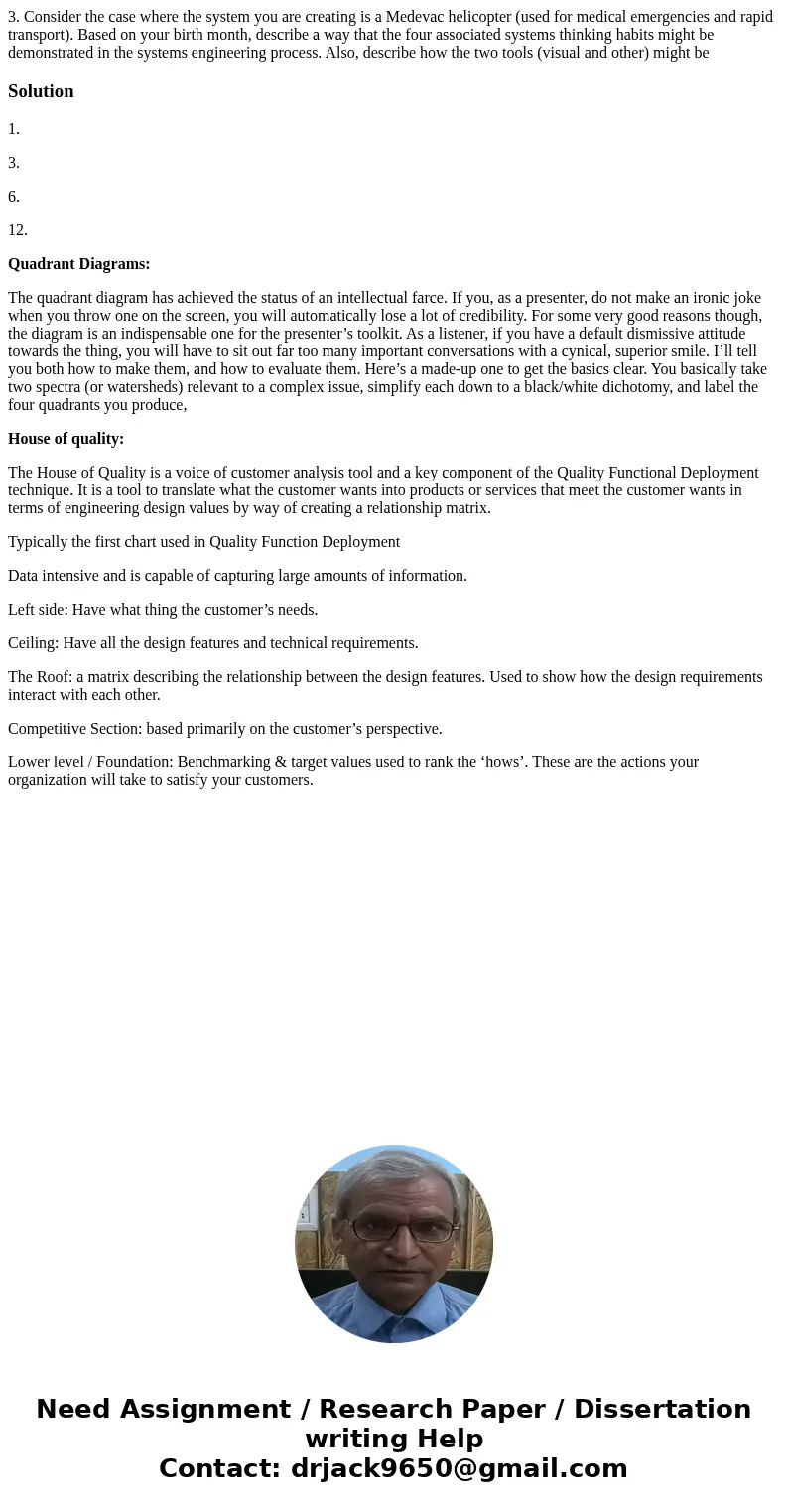3 Consider the case where the system you are creating is a M
Solution
1.
3.
6.
12.
Quadrant Diagrams:
The quadrant diagram has achieved the status of an intellectual farce. If you, as a presenter, do not make an ironic joke when you throw one on the screen, you will automatically lose a lot of credibility. For some very good reasons though, the diagram is an indispensable one for the presenter’s toolkit. As a listener, if you have a default dismissive attitude towards the thing, you will have to sit out far too many important conversations with a cynical, superior smile. I’ll tell you both how to make them, and how to evaluate them. Here’s a made-up one to get the basics clear. You basically take two spectra (or watersheds) relevant to a complex issue, simplify each down to a black/white dichotomy, and label the four quadrants you produce,
House of quality:
The House of Quality is a voice of customer analysis tool and a key component of the Quality Functional Deployment technique. It is a tool to translate what the customer wants into products or services that meet the customer wants in terms of engineering design values by way of creating a relationship matrix.
Typically the first chart used in Quality Function Deployment
Data intensive and is capable of capturing large amounts of information.
Left side: Have what thing the customer’s needs.
Ceiling: Have all the design features and technical requirements.
The Roof: a matrix describing the relationship between the design features. Used to show how the design requirements interact with each other.
Competitive Section: based primarily on the customer’s perspective.
Lower level / Foundation: Benchmarking & target values used to rank the ‘hows’. These are the actions your organization will take to satisfy your customers.

 Homework Sourse
Homework Sourse